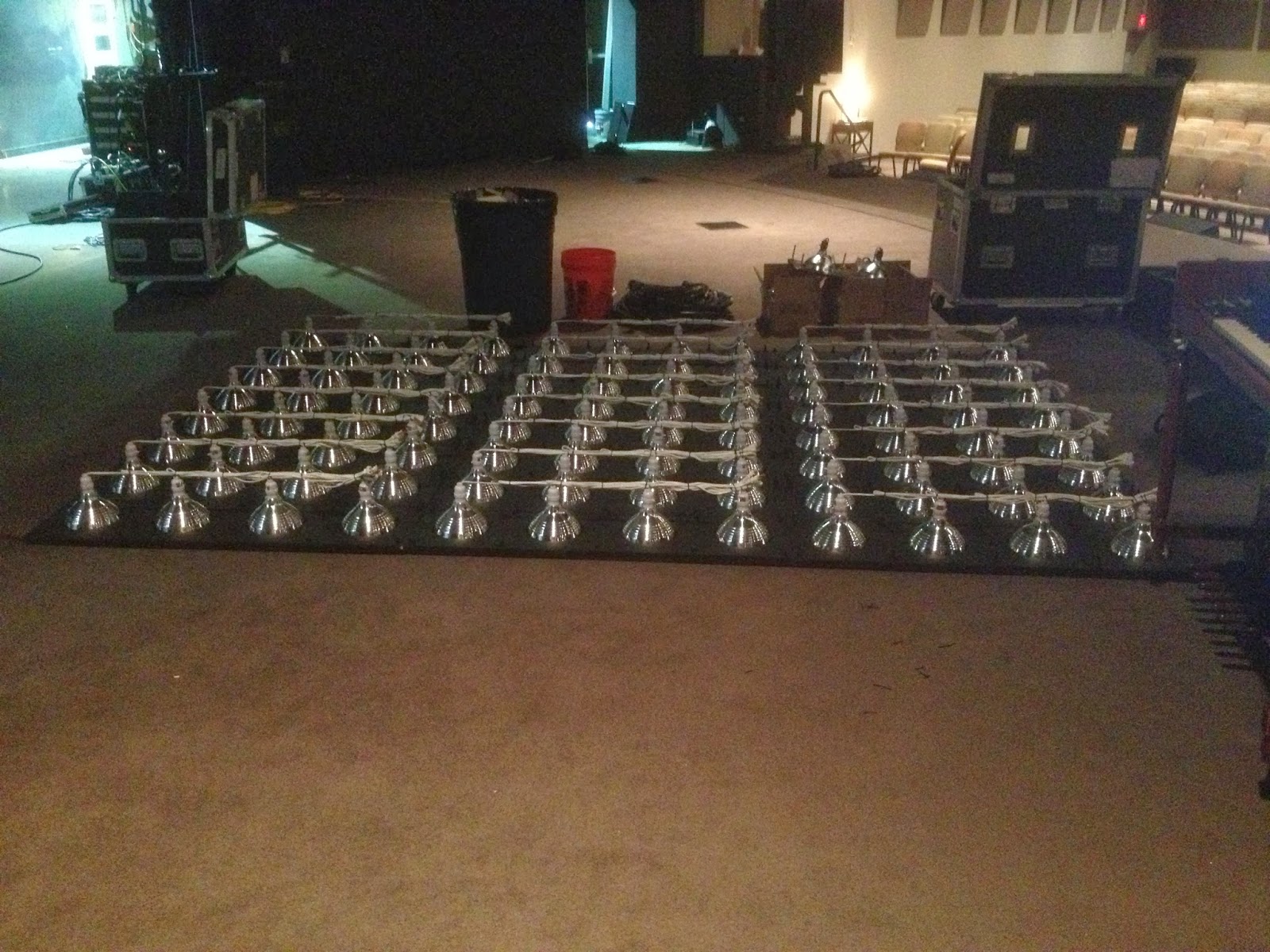For the fall, we decided to go with a single set with lots of black space that we could use for multiple series. The last few set changes have been so hectic and taxing on our team , it was a wise decision to regroup a bit. That being said, we decided to go with a set that had lots of beams, sources of lights, and haze. I mean honestly, who doesn't like beams!!!!
Our concept was to build some blinder type fixtures that we could used for an amazing glow. We like to call them 4 Bars. They are essentially a linear 4 light blinder. Although they are technically a blinder type fixture, we used them for a glow 95% of the time. It was very rare that they got dimmed higher than 30%.
There have been quite a few people who have done this set very well. See a few at Northview Church and Barge Heights . Ours is really just a different way of doing it. We wanted something that could stand alone or be modular and linked together.
Here is what we came up with:
Part of the challenge of this set was time. We designed, manufactured, and installed this set in a 2 week period. In this time line, we knew it would be overwhelming to try and cut all these piece by hand. Also with our desire to make the fixtures modular and symmetrical, we decided it would be best for someone other than me to cut them. ...You should see what I can do to a poor sheet of gel. =)
We had our friends at Boss Print Design cut the panels with their awesome CNC machine. We had the pieces cut from 1/2" MDF.
One change that is not shown on the 4-bar drawing, is that we ended up putting bolts in between each lamp light set. Its somewhat visible in some of the later build pictures.
Keith at Boss Print Design gave us an awesome price and finished our panels on a insane timeline. All of the panels were exactly the same, which has made life so easy building and hanging them.
We painted each of the 48 panels Flat Black with rollers. We also painted all the hardware we used with black spray paint. ... Krylon stock jumped that week.
To manufacture the lights, we used 2 MDF panels to sandwich the clamp lights into the openings. We used 2" bolts, washers, and nuts to tighten the panels together, which kept the lights in place. We use 3/8" hardware which we are moving towards as a standard for sets. (At the bottom is a list with links to the parts to build the 4-bars)
There was a ton of un-packaging involved, as you can easily see. Amazingly Kevin and Tonya are still my friends and don't hate me. :)
Each light had 10 bolts, so there was a ton of hand tightening! It was like an assembly line of awesomeness.
Since each light had 10 bolts, we had 240 bolt sets to tighten. That is a lot of ratcheting. Luckily we found on of the most useful tools I have ever had! The gator bit! We use an adapter for the drill and cut the tightening down to a very short time. This bit is awesome!
To simplify life, we made 4 circuit looms to power each of our bars. These were made from lamp cord and ada-tap connectors. We wrapped them in 1/8" tech flex to keep them clean. We made all of them at a length of 25 feet. Even with the extra length, our cabling is pretty clean considering we have over 400 connections onstage.
To help us individually control each light, we purchased Light-O-Rama dimmers to dim each clamp light. We purchased the commercial 2 x 15 amp series. That way in the future we could run 200 watts per dimmer channel. There were a few oddities we found with these dimmers, but they work pretty good for the cost. ($400ish) If you run power on a three phase system, you have to keep all the dimmers on one leg to eliminate weird data issues (sounds crazy, but its truth).
So that is how we built the 4 bars. The layout was more of a guess and check sort of thing. I laid it out in Vectorworks 3 or 4 times before we found something that worked well. I wanted to make sure I had some levels with my Mac 700s, so i placed them and my 101s first and filled in the gaps with the blinders. Once we were installing we did make some adjustments to fit the fixtures in easier with our rigging. Since the fixtures are pretty light, we used balling wire and tieline to hang them.
As mentioned earlier, we laid out our panels evenly, so that we can combine them to look like a larger or different solid fixture. They can attach together with small uni-strut clips easily. So as you can see below, two fixtures look like one in this example.
The cool thing is the hardware is load-bearing, so you can hang 4 in a row with no issue. Pretty cool in my opinion.
Lastly, here is the awesome finished product.
What it took for our 24 fixtures:
48- CNC cut 1/2" MDF panels 4'x1' Boss Print Design
96- 8.5" clamp lights Clamp Lights
250- 3/8" Bolts Bolts
1000- 3/8" Washers Washers
250- 3/8" Lock Washers Lock Washers
250- 3/8" Nuts Nuts
10- Zip Cord rolls 250' Zip Cord
100- Male Adataps Adataps
100- Female Adataps Adataps
25- Rolls 25' 1/8" Tech Flex Tech Flex
5- Light O Rama Dimmer LOR1602
120- mirrored 100W lightbulb Lightbulb
































